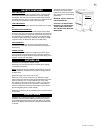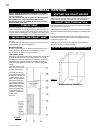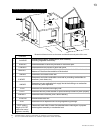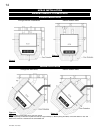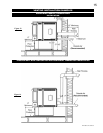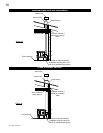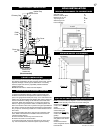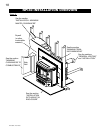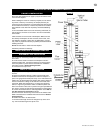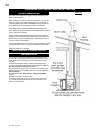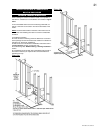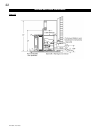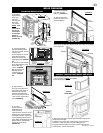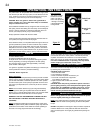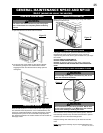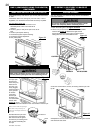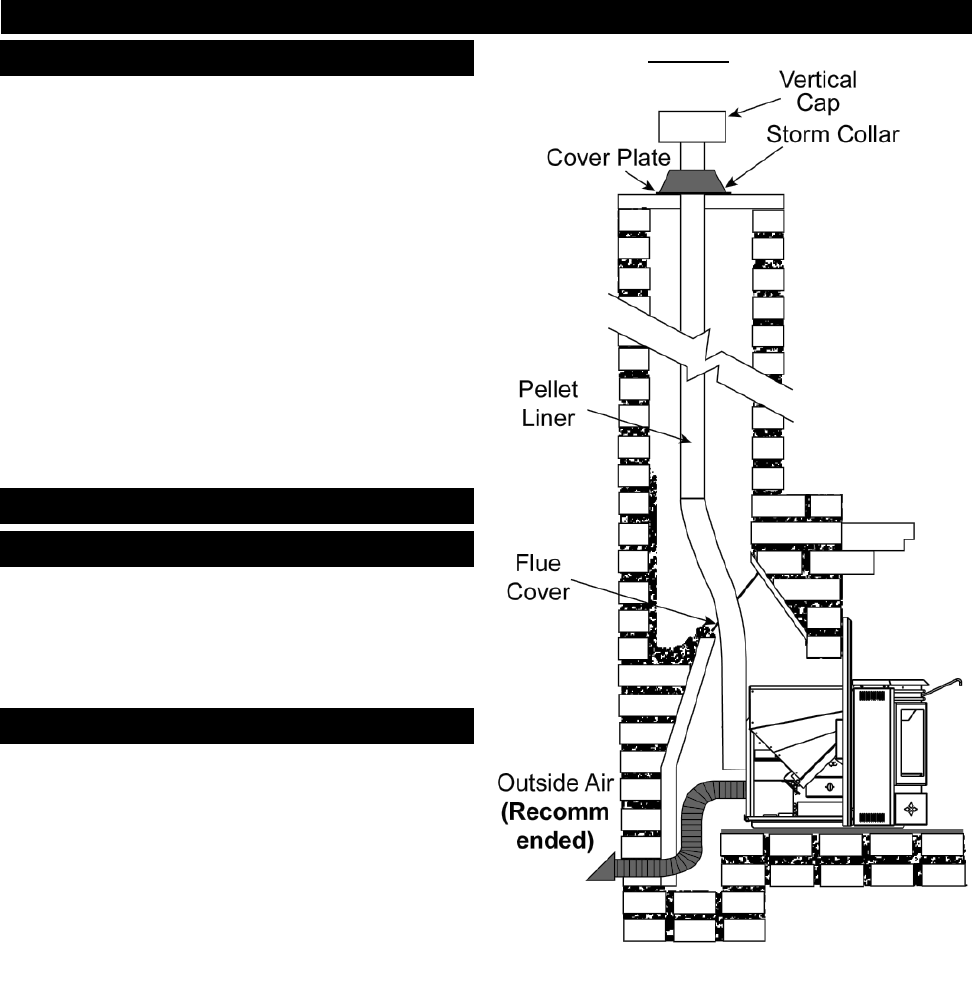
W415-0616 / B / 02.18.08
19
Figure 22
INSTALLATION INTO A MASONRY FIREPLACE
Stand-offs (See Dimensions on page 7) may be removed to fi t the
insert into the fi replace.
When installing the insert into a masonry fi replace, do not remove
any bricks or masonry. If necessary, the damper plate may be
removed from the smoke shelf, to accommodate the chimney liner.
Do not weaken the structure, or reduce the protection for combus-
tible materials to less then that required by the National Building
Code.
A non-combustible hearth must cover the fl ooring underneath, as
well as extend a minimum of six inches in front and to both sides
of the heater.
Clean all ashes out of the inside of the fi replace. Make sure that
the chimney and fi replace are free of cracks, loose mortar, creo-
sote deposits, blockage or other signs of deterioration. If neces-
sary, have any repair work done by a qualifi ed professional before
installing the insert.
Do not remove bricks or mortar from the fi replace.
Install fl oor protection if necessary.
PRIOR TO INSTALLATION
INSTALLATION INTO A MASONRY FIREPLACE
HORIZONTAL VENT INSTALLATION
VERTICAL LINER INSTALLATION
1. If you plan on connecting outside air it is recommended to do so
at this time.
2. A hole must be made in the back of the fi replace to accom-
modate the pellet vent. Connect the pellet vent to the back of the
stove and position in place. Refer to manufacturer's installation
instructions and the "General Venting Section".
3. Connect the vent cap to vent.
1. If you plan on connecting outside air it is recommend to do so at
this time.
2. Remove the fi replace damper or fasten it permanently open.
3. Measure the throat of the fi replace and mark this shape on a
piece of 24 gauge sheet metal (fl ue cover). Cut a hole sized for the
pellet liner to lie directly below the fi replace fl ue opening. Allow two
inches of material for a fl ange on all sides and cut to these mea-
surements. Bend down the fl anges. If you have never done this
before, it might be a good idea to make a cardboard pattern and
test it fi rst. fasten this fl ue cover in position as high as possible with
two masonry screws per side through the fl anges into the fi replace.
4. Convert the exhaust tube to a vertical application. See "Rear to
Top Vent Conversion Instructions" section.
5. Run a liner down the chimney and connect to the exhaust tube.
Refer to manufacturer's installation instructions and the "General
Venting Section".
6. Position the insert in it's fi nal location.
7. Pull the excess length of liner out through the top of the chim-
ney. Trim the excess length and cap the vent.



